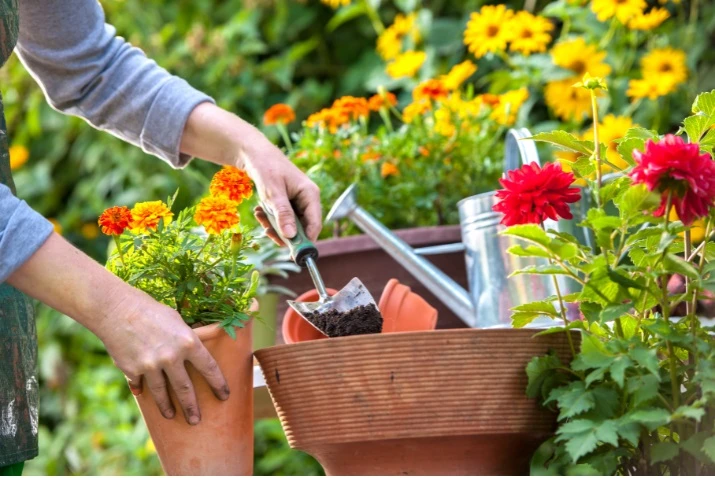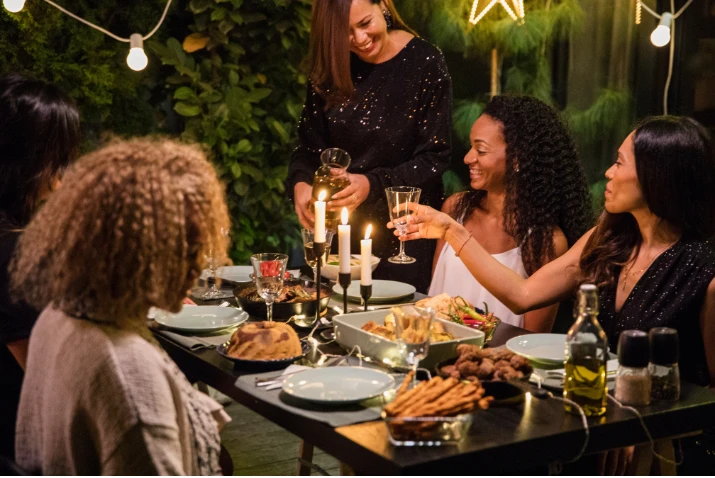Gardening can be a rewarding activity that connects you with nature, makes your outdoor space more beautiful, and can even put food on your table. If you're wanting to live a more mindful life and look after the planet, here's 12 tips to reduce your ecological footprint and make your garden more sustainable.
1. Harvest rainwater
Installing rain barrels or other water collection systems allows you to capture rainwater that you can use to water your plants and lawn. In the UK, where we get a decent amount of rainfall, it makes a lot of sense to do this - it's not only sustainable but lowers your water bill too!

2. Start composting
Chemical fertilisers can leach into water supplies and also be ingested by animals and insects that visit your garden. Composting is an excellent alternative to chemical fertilisers. Not only does it enrich the soil naturally, but also reduces organic waste sent to landfills. You can create your own compost heap with kitchen scraps, garden waste, and leaves. If you don't have a particularly big garden, or you don't want a heap that children can touch, you can buy compost bins that do the same job but are contained.
3. Try companion planting
Companion planting is the practice of growing plants together that benefit each other. For example, marigolds can deter pests from vegetables, and beans can enrich the soil with nitrogen for neighbouring plants. This approach reduces the need for fertilisers or chemical pest control.

4. Choose native plants
Native plants are those that are adapted to the local climate, making them easier to grow and maintain. They tend to require less water and fertiliser, contributing to a lower environmental impact.
5. Plant nectar rich flowers to attract pollinators
According to Friends of the Earth, 35 UK bees species are under threat of extinction, and all species face serious threats. Bees help with the production of a third of our food across the world. By planting flowers that attract bees, and not using toxic pesticides, you are doing your bit to help keep them going.

6. Create wildlife habitats
A sustainable garden should support biodiversity. Add birdhouses, insect hotels, bird baths, or small water features to attract various forms of wildlife. You could easily create these yourself, for example an unused cup sourcer could easily be a bird bath.
7. Reduce manicured lawn areas
Manicured lawns require significant resources to maintain, including water, fertiliser, and mowing. Keeping an area of untamed, natural growth can provide a haven for insects and small animals, reduce resource required, and adding some wildflowers will make it look like your own wildflower meadow.

8. Use sustainable materials / repurposed items
When designing or maintaining your garden, choose sustainable materials. You can get really creative by visiting antique/vintage shops, scrap yards, and boot sales to see what's about. Things like an old sink or unused crockery make a fantastic planter, an old ladder or wooden sleepers for edging, or old furniture to display plants on. To protect and nourish your soil, opt for organic mulches like bark or straw.
9. Minimise plastic use
Unfortunately gardening often involves items being sold in plastic pots and bags that can contribute to waste. Reuse existing pots where you can, and look for biodegradable options where possible.

10. Start your own fruit and veg patch
Growing your own fruits and vegetables is a great way to ensure your food is fresh, lower your carbon footprint, and you have the pride of eating something you have grown yourself! If you don't have a garden big enough for a large patch, try planting a few seeds in some pots or troughs instead.
11. Practice seasonal gardening
Focus on growing plants that are in season and suitable for your climate zone. Seasonal gardening reduces the energy and resources needed to artificially create favourable conditions for plants.

12. Choose hedges for boundaries
When considering boundary ideas, think about using hedges as a natural alternative to fences or walls. Hedges not only offer privacy and aesthetic appeal but also support biodiversity by providing shelter and food for wildlife. They clean the air, capture carbon, and serve as vital green corridors for animals to travel.
Bonus tip! 13. Borrow tools
Before buying new tools, ask if a friend, relative or neighbour has what you need and if you can borrow. There's no point buying something new if it's only going to be used for a small part of the year, such as a rake. You could also look into Library of Things - a collection of items for loan to the local community.
By adopting sustainable gardening practices, you can create a garden that’s not only beautiful but also environmentally responsible. A sustainable garden benefits not just the gardener but insects, wildlife, and the planet as a whole!
If you enjoyed this post, why not take a look at our Sustainability Hub?








